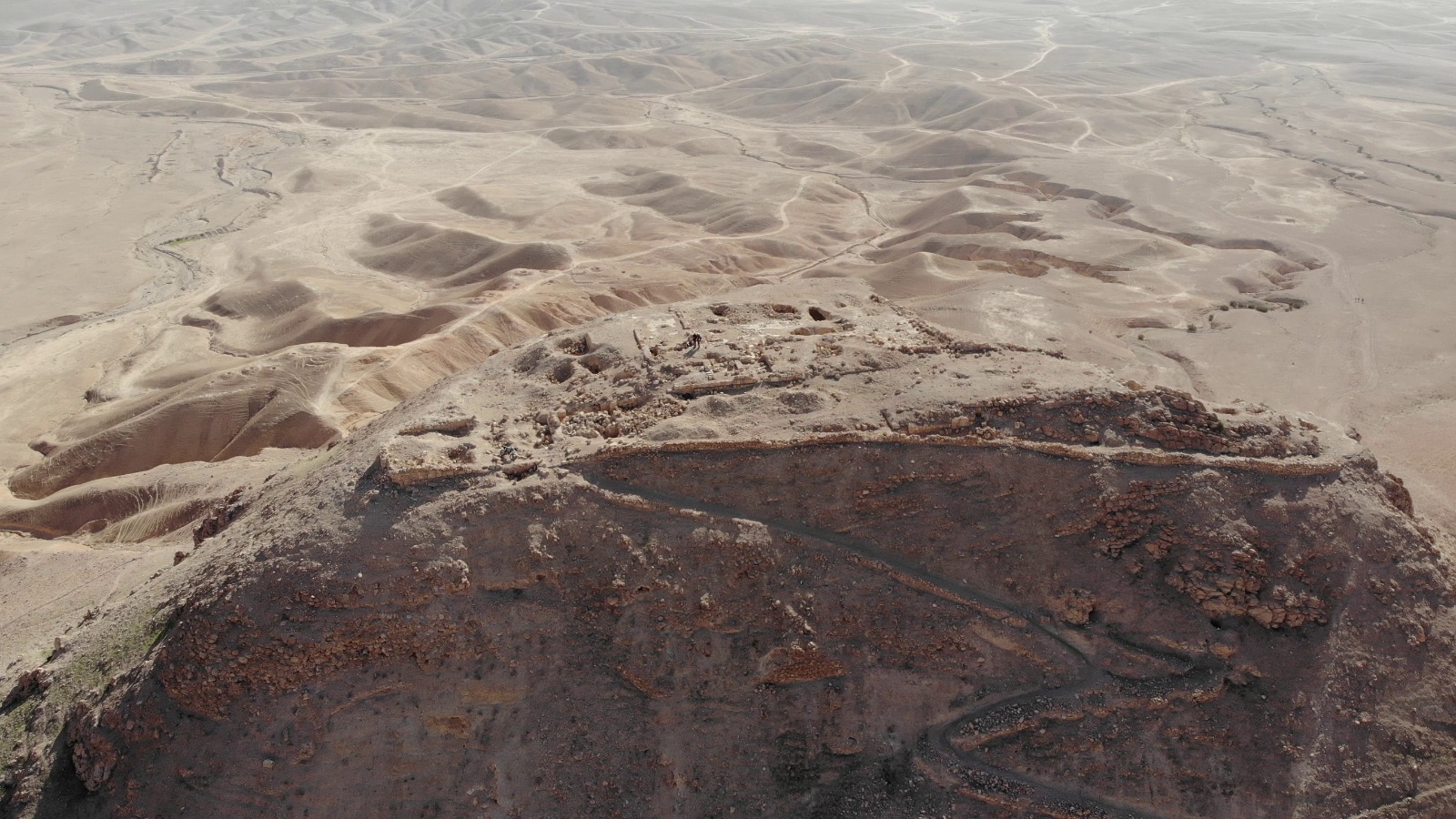
Archaeologists unveiled a unique Byzantine Greek Psalm inscription at the historic Hyrcania Fortress in the Judean Desert near Jerusalem. It was discovered painted in red beneath a cross on the side of a large building stone.
It contains a paraphrase of Psalm 86 in the Greek language used in the New Testament. This extraordinary find reads, “Jesus Christ, guard me, for I am poor and needy. Guard my life, for I am faithful to you.” It echoes a passage from the original Hebrew psalm, “The Prayer of David,” which says, “Hear me, Lord, and answer me.”
Unique Byzantine Psalm inscription in New Testament Greek discovered in Judean Desert #Israel #history https://t.co/ipnaTuGRMp [timesofisrael pic.twitter.com/QlAeAyLI73
— Eli Dror (@edrormba) September 27, 2023
Greek Inscription and Hyrcania Fortress
Archeologists believe that the Greek inscription is likely the work of a 5th-century AD Byzantine Christian monastic community that once inhabited the region. Dr. Avner Ecker, of Bar-Ilan University, assisted in deciphering the inscription. He noted minor grammatical errors, suggesting the involvement of a non-native Greek speaker, possibly with a Semitic-speaking background.
The origins of Hyrcania Fortress can be traced back to the Hasmonean dynasty in the 2nd to 1st centuries BC. Perched upon a 200-meter hill, it was constructed after flattening the terrain, forming part of a network of hilltop desert fortresses. Subsequently, King Herod undertook substantial expansion and refurbishment, similar to his other renowned projects such as Masada and Herodium.
Following King Herod’s era, the fortress fell into disuse until the late 5th century AD when a small Byzantine Christian monastery was established, known as Kastellion, or “Little Castle,” in Greek. This monastery endured the Islamic conquest in 635 AD and remained active until the early 9th century.
Other Findings
Aside from the Greek psalm inscription, another similar find near Jerusalem awaits analysis. These inscriptions, etched in Koine Greek on stone, represent a remarkable rarity in the field of archaeology.
During the excavation, a small gold ring was also unearthed. It features an Arabic inscription: “Mashallah.” Believed to date back to the 7th to 8th centuries AD, the ring may have served as a seal. At the same time, its turquoise stone likely originated from Persia.
The discovery of man-made tunnels at the base of the hill, dating back to the First Temple era, also captivated archaeologists. However, their purpose and origin remain shrouded in mystery, to be revealed during the upcoming excavations in 2024.
Although the tombs of Herod and Byzantium were looted, much of the fortress remains intact due to its remote location. The Israel Antiquities Authority work to protect archaeological sites in the region, including the Hyrcania fortress.
See all the latest news from Greece and the world at Greekreporter.com. Contact our newsroom to report an update or send your story, photos and videos. Follow GR on Google News and subscribe here to our daily email!



